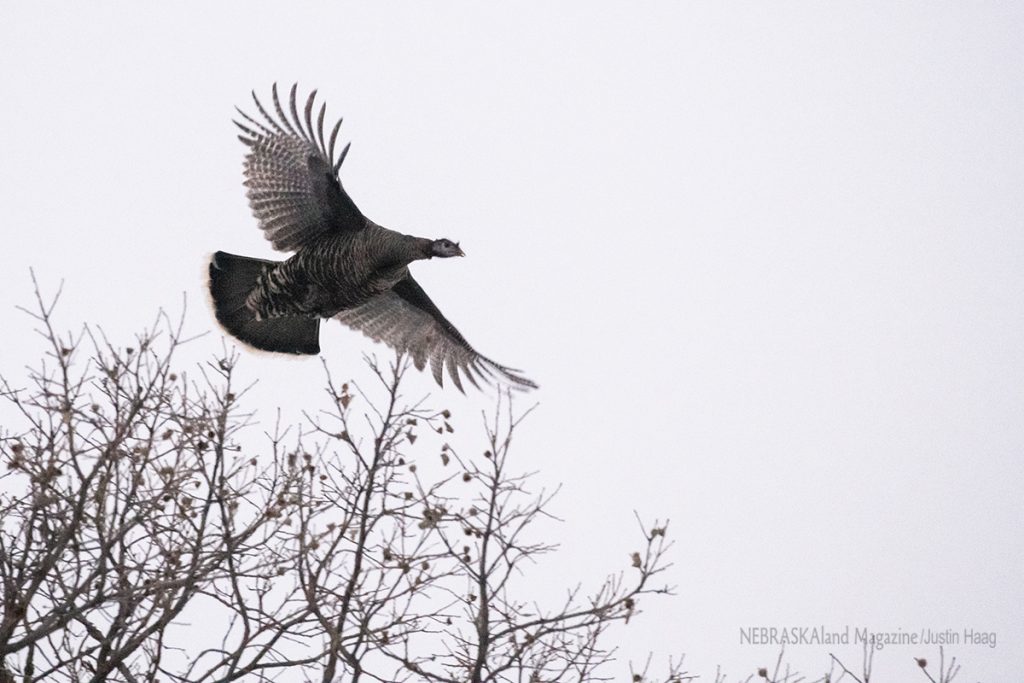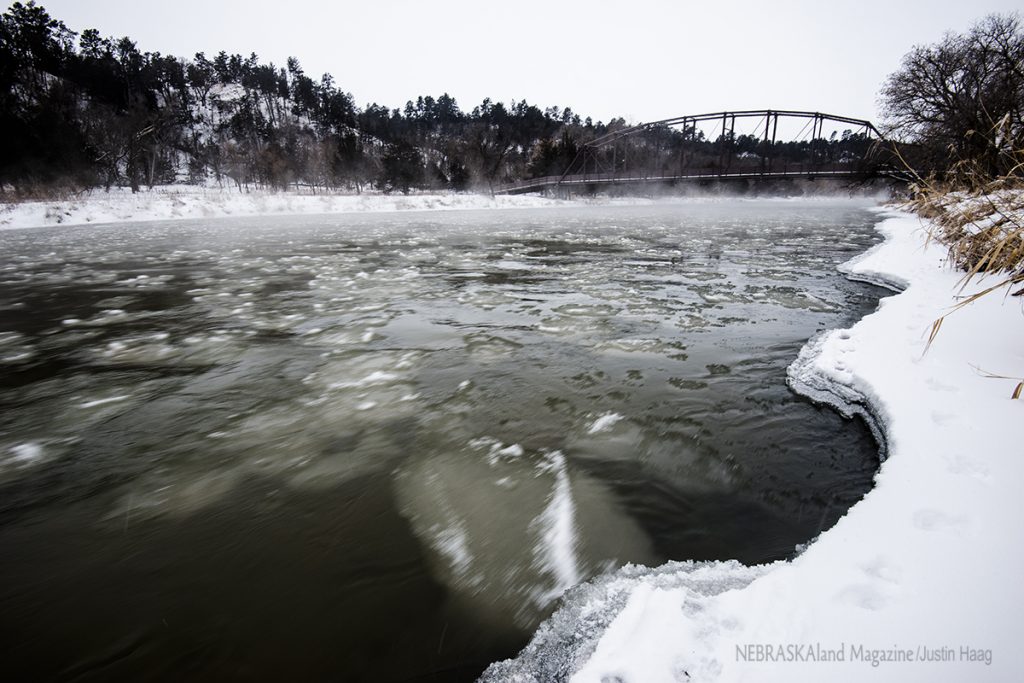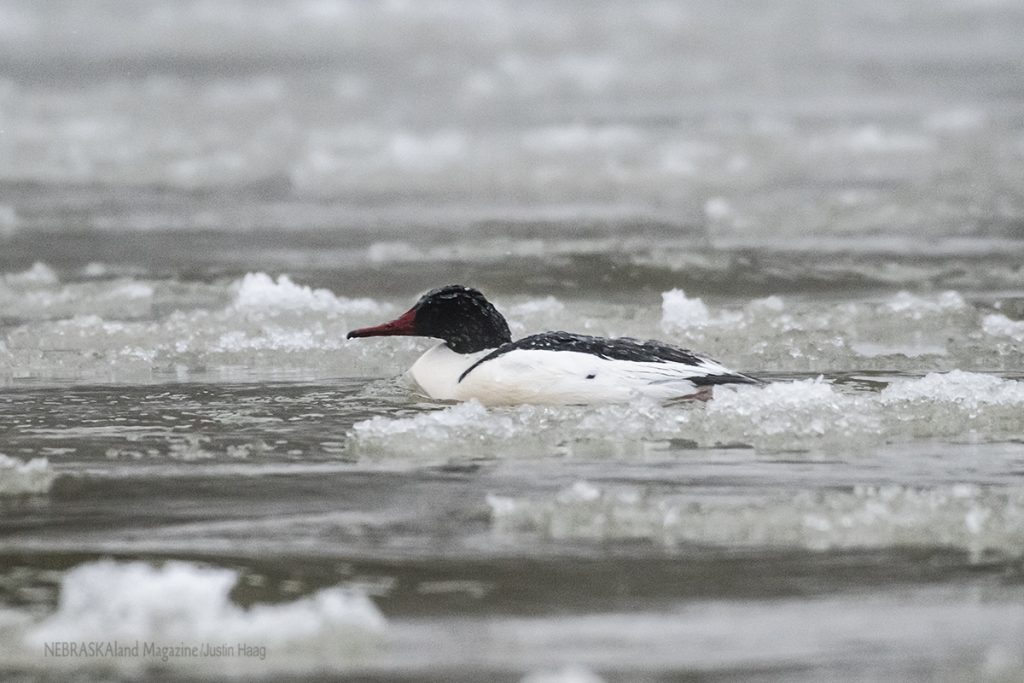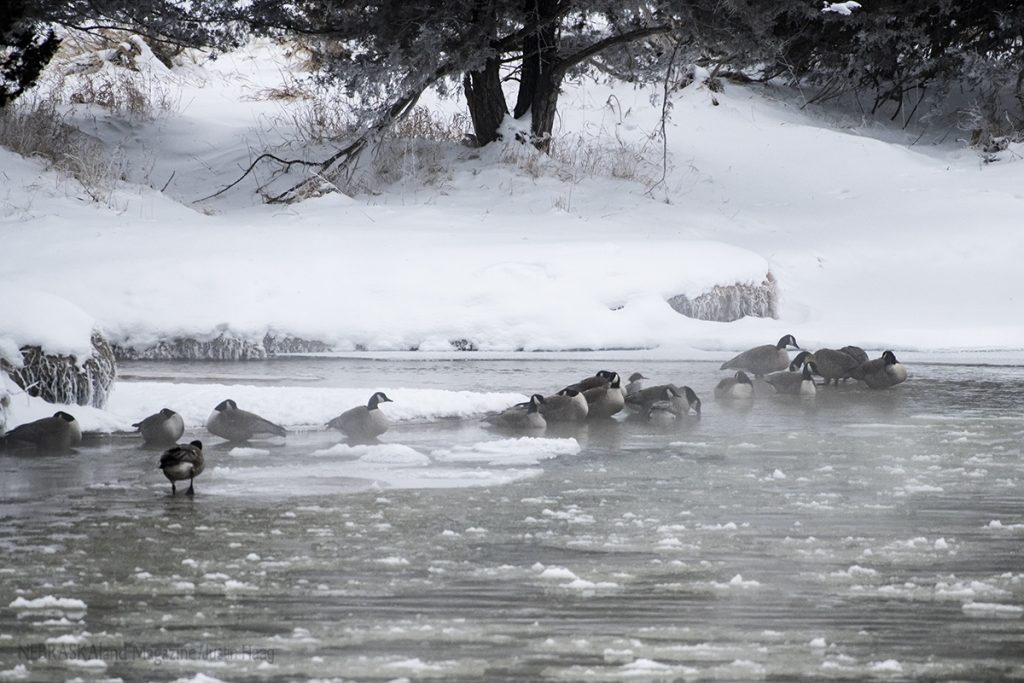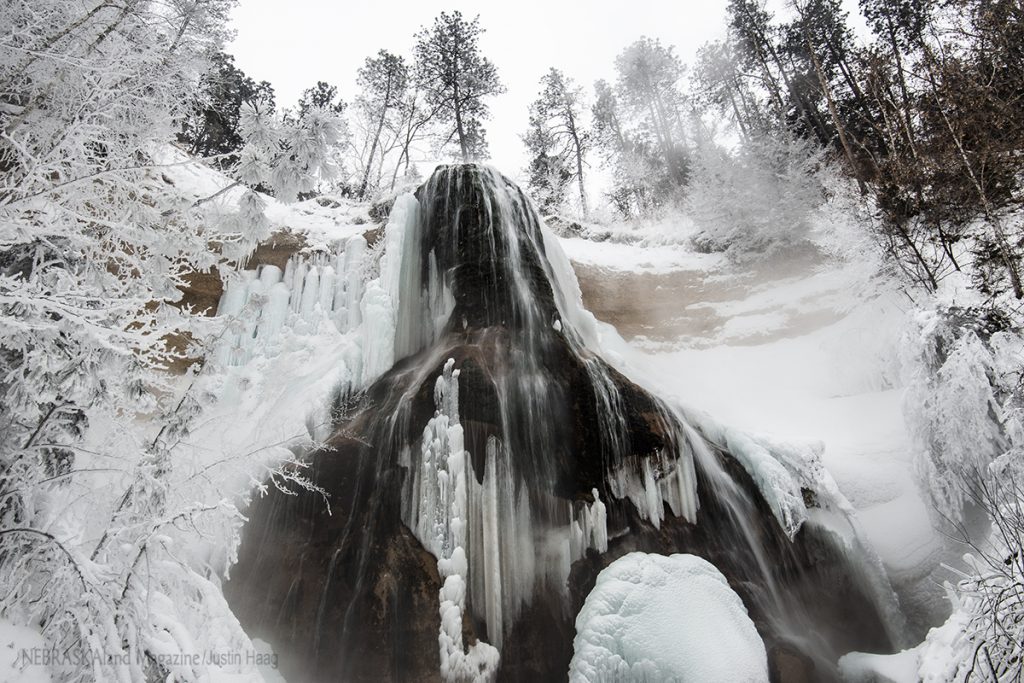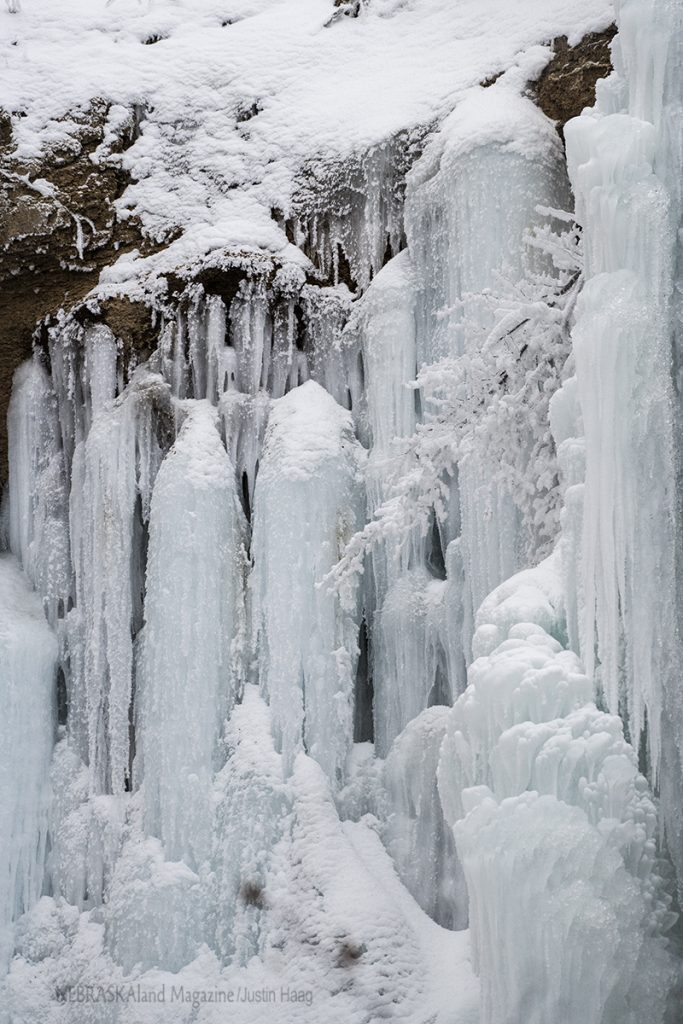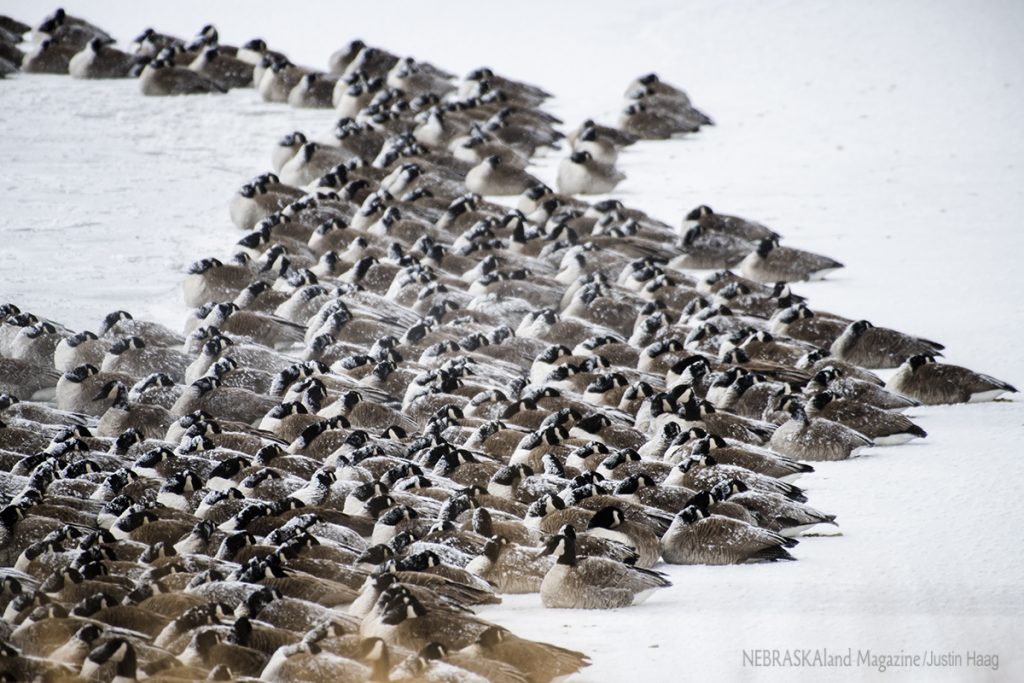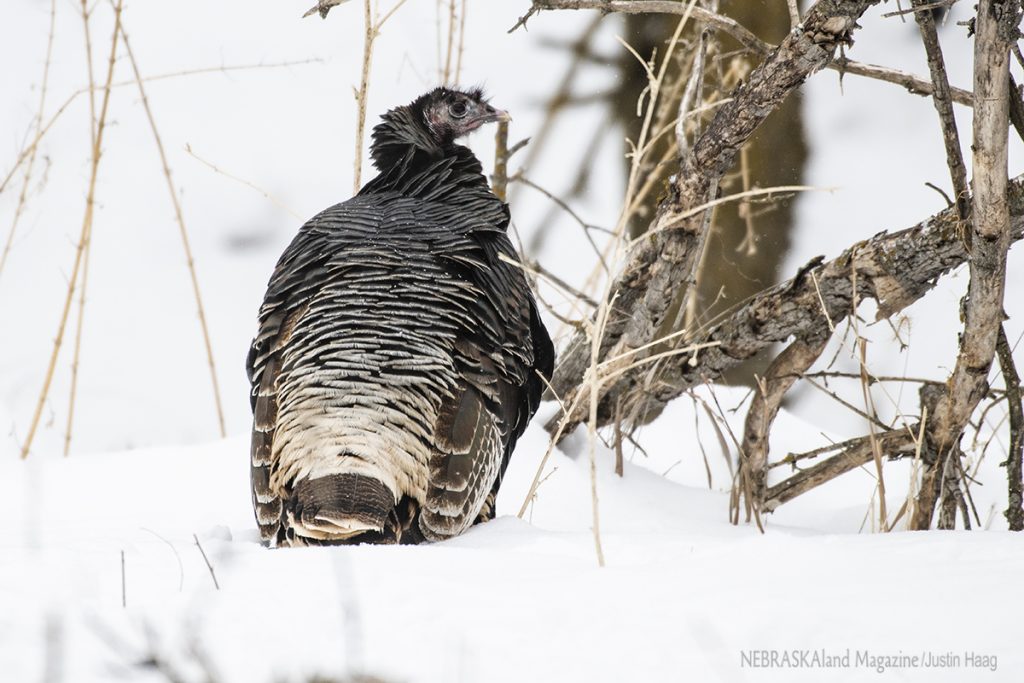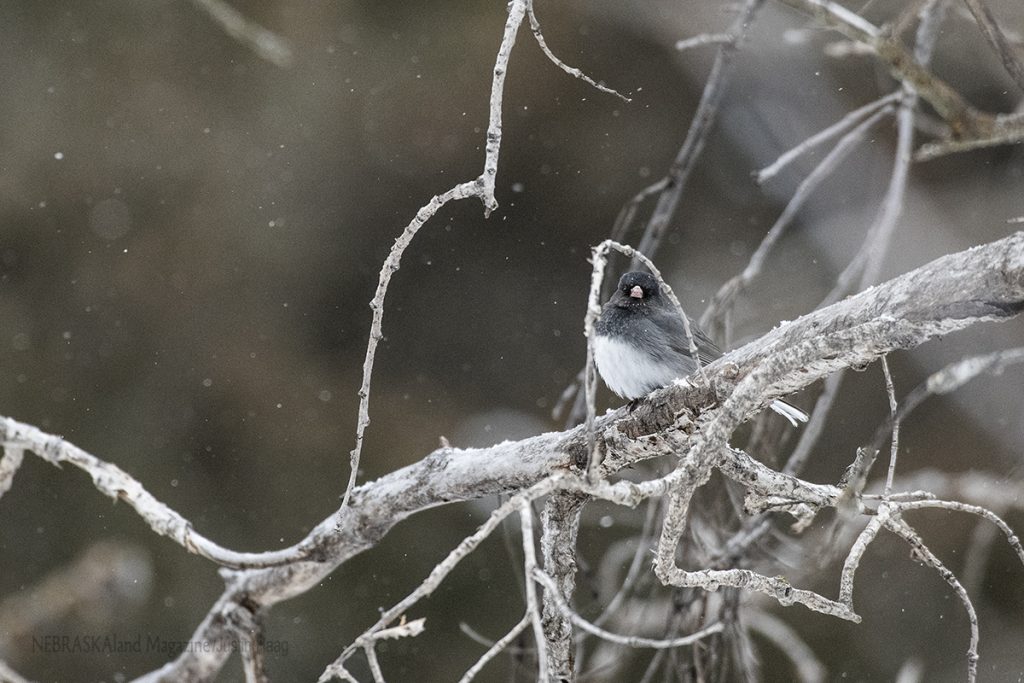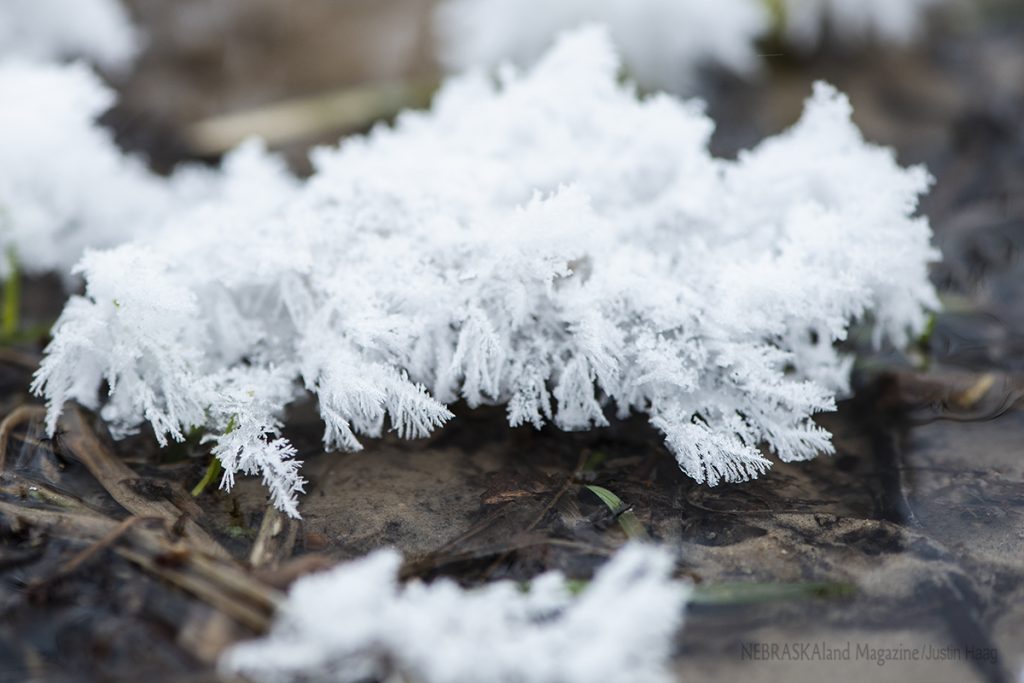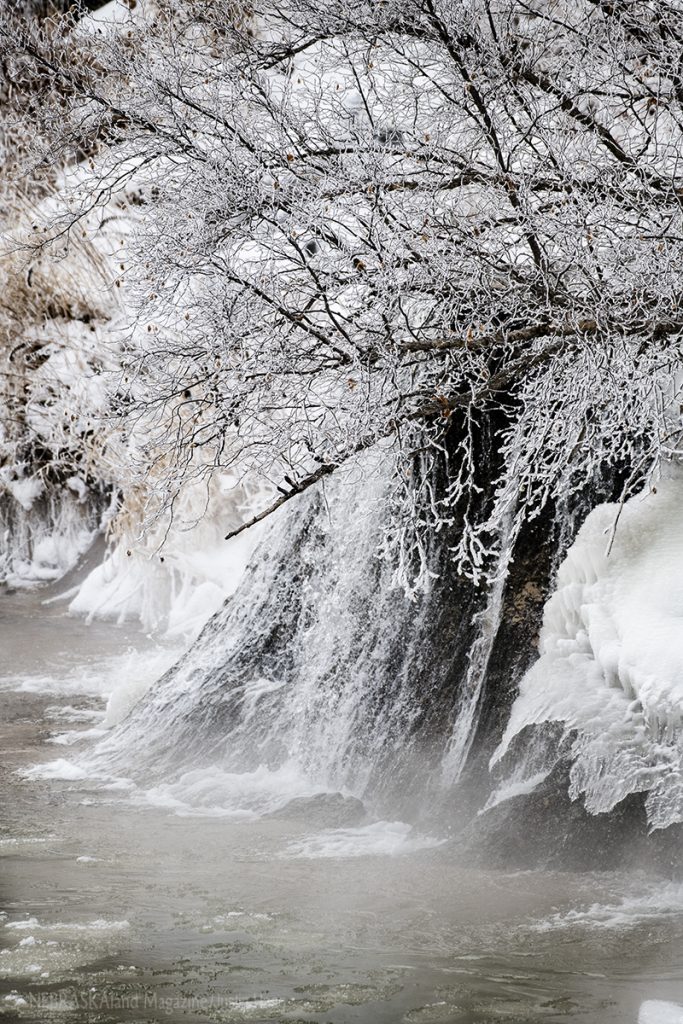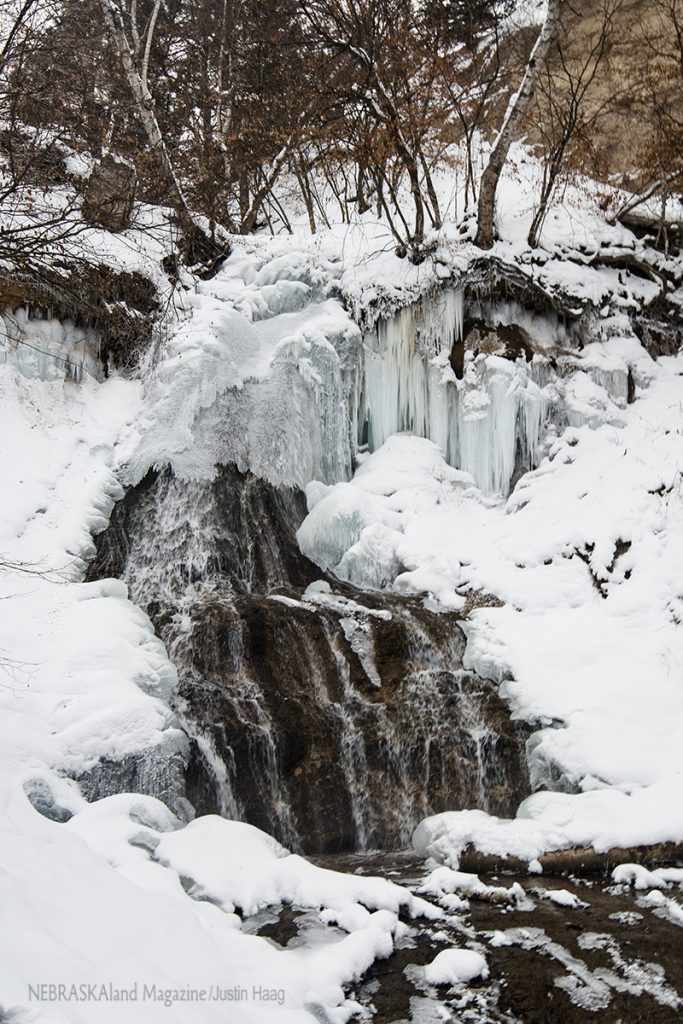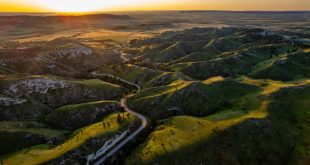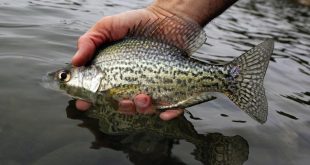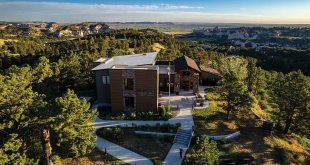It’s interesting to watch our parks and wildlands change appearances with each season. Our weather extremes can sometimes make us groan, but they provide a lot of material for a nature photographer.
Cherry County’s Niobrara Valley of Feb. 26 certainly had a different appearance than the last time I was there – a camping trip with my kids in August.
With the temperature at -3 F, I pulled in to the park at daybreak under an overcast sky. On such a gray day, my expectations were not high for capturing great photos.
I seemed to have the park’s riverfront all to myself – except for the many wild turkeys that were leaving their roost above the campground upon my arrival.
The Niobrara retained its scenic charm, even though big chunks of ice had taken the place of the many tubers and kayakers of summer.
Even though no human activity was observed, there were still many signs of life. While shooting scenic photos of the river, I almost did not notice this drake merganser (Mergus merganser) floating toward me. I quickly hunkered down in the snow and snapped a few photos as it floated by just a few yards away. If it saw me, it did not seem to mind my presence.
Moments later came a hen of the same species. I assume the two were “together,” if you know what I mean.
I certainly did not envy the birds swimming in the icy water. The insulating properties of duck feathers are much more suited to the task than the skin of humans, though. The feathers are treated with oils from preen glands to repel water, and they are designed to trap layers of air to keep the small bodies from freezing. Ducks also have a fascinating counter-current circulatory system in which warm blood from the heart quickly heats the chilly blood returning from their feet. Even when the mercury drops below zero, these birds remarkably maintain a body temperature that exceeds 100 degrees.
In summer, parked tubes and kayaks usually cover the spot where water from Smith Falls meets the Niobrara River. Winter brings a different visitor to this location.
The walk through the snow across the Verdigre Bridge to Smith Falls was certainly worth it. Similar to many Nebraskans, I have been visiting Smith Falls since my childhood (not to date myself, but back before the bridge was in place for pedestrian access). Never have I seen Smith Falls more striking as I did on this day. Through waves of rising mist stood the icy spectacle, with spring water roaring as it dropped to the bottom of the canyon and flowed toward the river just as it has for ages. Dressed in white, this natural treasure attained a new level of beauty. I was thankful that the mist parted long enough to capture a few photos. Unlike past visits, however, I had no urge to stand beneath the water.
As I admired the display, these icicles toward the upper left of the scene caught my eye. They seemed to resemble the ghosts of bearded old men in a balcony, standing watch over the canyon – perhaps finding amusement in visitors such as myself who make the trek to see the falls.
Geese have such efficient down feathers for insulation that humans have long used them in clothing. They no doubt came in handy during this slumber party on the ice.
Speaking of insulating properties of feathers, check out this wild turkey (Meleagris gallopavo). Birds of all sizes often ruffle their feathers in order to make room for as much insulating air as possible. This behavior seems to be especially pronounced by the big feathers of a wild turkey. A strutting tom in spring always makes for a pretty photo, but the ruffled feathers of this species on a bitterly cold day also are picturesque.
While we’re talking turkey, Turkey Feather Falls on the park’s Jim McAllister Nature Trail was completely covered in ice and unfortunately was not as photo-worthy as I hoped it would be. This dark-eyed junco (Junco hyemalis) seemingly striking a pose among falling snowflakes made it worth the hike, though.
Also eye-catching was this hoarfrost atop spring water that spreads out over a flat near the trail.
So eye-catching that I could not resist shooting a close-up.
Smith Falls, of course, is not the only water show in Cherry County. Berry Falls, another of the more than 180 falls known to exist in the area, was also looking magical.
As was Fort Falls – seemingly emerging from a cavern of ice.
Even on the coldest, grayest of days, there are magical scenes awaiting us in the outdoors. I am looking forward to whatever beauty awaits the next time I return to this extraordinary region – regardless of the weather.
 Nebraskaland Magazine
Nebraskaland Magazine

